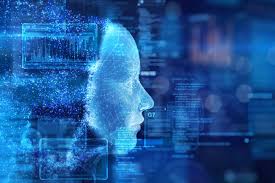Artificial Intelligence (AI) is transforming various sectors, and energy management isn’t an one of them. As the world struggles with rising energy demands and environmental concerns, artificial intelligenceis becoming a game changer in improving resource efficiency and efficiency in energy use.
What is AI in Energy Management?
artificial intelligence (umela inteligence) is the term used to describe the simulation of human intelligence in machines designed to think and learn. In the field of energy management, AI uses algorithmic models and machines learning to analyse huge amounts of data, formulate predictions and automate decision-making. These technologies help in optimizing the energy production, distribution and consumption, making systems more effective and responsive.
Key Applications of AI in Energy Management
Predictive Analytics AI machines analyze historic data and real-time inputs to predict energy demand and supply. This helps in predicting peak demand times and adjusting energy production to meet the needs, decreasing waste and increasing reliability. As an example, AI can anticipate high demand for energy periods and make sure that the power grids are ready to handle the load.
Smart Grids AI increases the effectiveness of smart grids by optimizing the distribution of electricity. With real-time monitoring and analysis, AI can detect faults as well as balance loads and regulate energy flows more effectively. This improves grid stability and reduced losses in energy.
The efficiency of energy: AI algorithmic algorithms optimise energy consumption in industrial and residential processes. By studying patterns of usage as well as environmental conditions, AI systems can alter heating, cooling, and lighting systems to cut down on energy consumption without compromising the comfort or efficiency. For example smart thermostats utilize AI to understand preferences of the user and adjust temperature to save energy.
Renewable Energy Integration: AI supports the integration of renewable energy sources such as solar and wind into the grid. It can predict the weather conditions that will optimize energy production from these sources, and it also helps manage their fluctuation. AI helps with the effective storage of and distribution for renewable power, which ensures an uninterrupted supply.
Demand Response AI helps in demand response by predicting and directing shifts in energy usage. It helps in incentivizing consumers to reduce or shift their energy usage in peak times, thereby stabilizing the grid and reducing the need for additional energy generation.
Challenges and Future Prospects
Despite its benefits however, the use of AI to manage energy is not without problems such as privacy concerns, high implementation costs, and the need for skilled personnel. In addition the integration of AI with existing infrastructure requires careful planning and adaptation.
The future is bright, and advancements in AI technology are expected to bring further advancements in energy management. Improved algorithms, greater availability of data, and sophisticated sensors will drive further efficiencies and innovations. AI’s role in creating eco-friendly energy alternatives is predicted to increase and will become a key component in the quest for greener and more environmentally friendly energy landscape.
In short, AI is revolutionizing energy management by optimizing resource use as well as improving efficiency and making use of the use of renewable sources for energy. As technology evolves its impact on the energy sector is expected to be more extensive and will lead to more efficient and more sustainable energy solutions.



